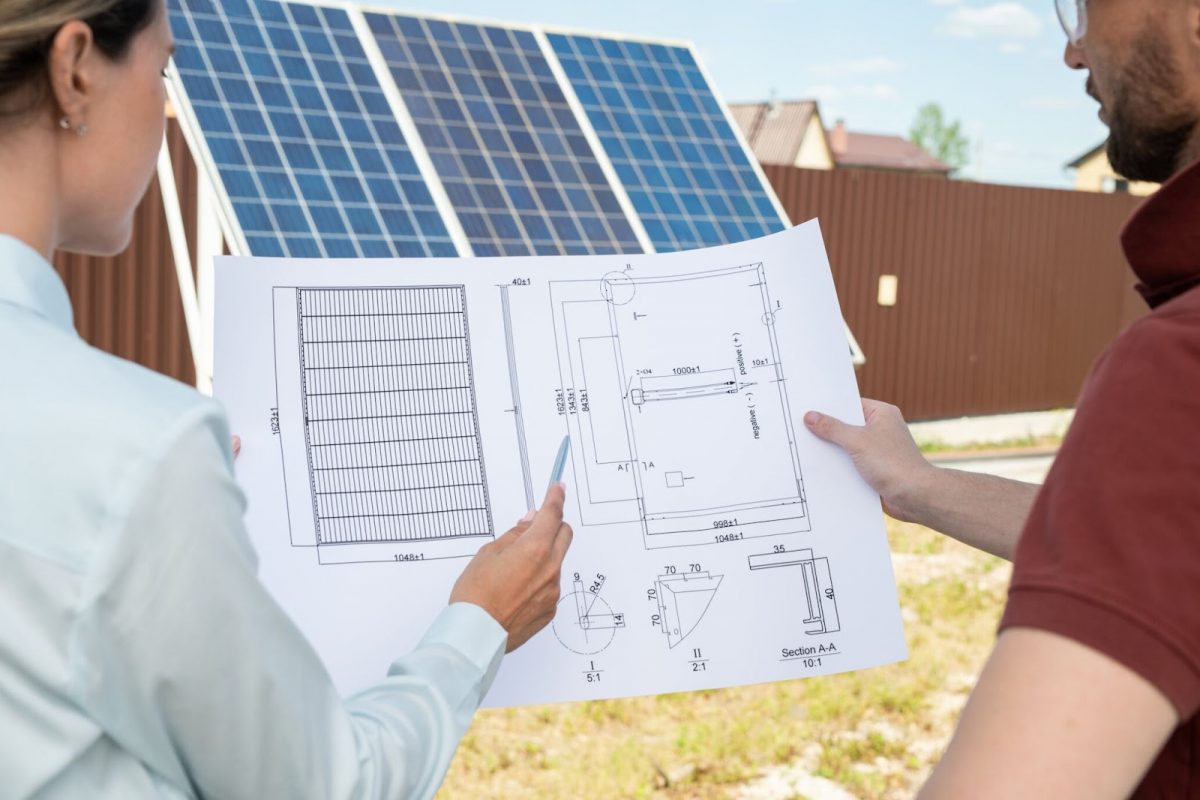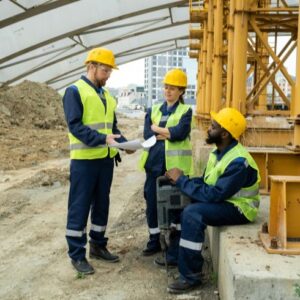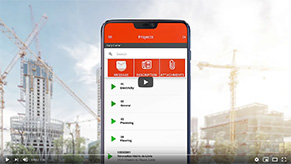
21 September, 2022
Mobile-Punch
SHARE
Why is sustainability important in construction?
With the global population expected to reach 9 billion by 2050, we need to address issues surrounding sustainable development. But, what is sustainable construction, and what steps can be taken to implement sustainable building practices?
What is sustainable construction?
Sustainable construction involves making buildings that have minimal impact on the environment, while still meeting the needs of the people who live in them. This includes reducing energy consumption and waste production, using renewable materials, minimizing noise pollution, and improving indoor air quality.
There are many ways to achieve sustainability within the construction process including:
- Using renewable and recyclable natural resources
- Reducing the amount of embodied energy used in building materials
- Reducing the energy consumed during construction
- Reducing the amount and type of waste generated during construction
The goal of sustainable construction is to make our built environment healthier, cleaner, and safer for future generations.
Why is sustainable construction important?
At the end of the day, we all need to be working to leave the planet in a better state than we found it in, and sustainable construction is just one small part of achieving that. The construction industry has a big footprint. Energy consumption alone makes up about one-third of the global total, and it continues to grow.
Construction accounted for $7 trillion worth of economic activity globally in 2017, according to the World Economic Forum, highlighting how big the industry is, and therefore how big of an impact it can have on the planet. This includes everything from residential homes to office blocks, hospitals to hotels, shopping malls to stadiums. Thankfully, there are ways to reduce our carbon footprint and save money while developing these huge projects.
Informed decisions throughout the life cycle of a building means less waste and lower costs. Using recycled or renewable raw materials reduces the need for raw resources and helps protect the natural environment. Choosing low-energy lighting systems saves electricity and reduces greenhouse gas emissions. Building codes require high levels of insulation to keep heat inside and cold outside. Designing spaces around people rather than machines means fewer air conditioning units and lower operating costs. All of these things add up to a better bottom line.
Reduce your carbon footprint with Mobile-Punch
The challenges of sustainable construction
Although the benefits of environmentally friendly sustainable construction methods are apparent and evident, transitioning isn’t an overnight process. It requires time and planning to implement the best practices. Training must be implemented in order to begin integrating sustainable methods into the construction industry, and that requires time and money.
Another barrier that many businesses may encounter is the actual increase in building material costs. Nevertheless, as more interest in sustainable development efforts continues to grow, more construction firms are beginning to make the transition to sustainable construction, with greener building activities rising.
The benefits of sustainable construction
Sustainable building practices are now more popular than ever before. There are many reasons why this is so. Below we have listed some of the major benefits of sustainable construction which are causing sustainable practices to be adopted by construction companies across the globe.
1. Promotes healthier living
Green construction projects are becoming increasingly popular because they offer several benefits to both the environment and the people living. One study found that green buildings actually improve health.
In one experiment, researchers evaluated the effects of different types of offices on employee performance. They discovered that those working in green buildings scored higher on tests measuring cognitive function and decision-making skills. Employees also reported feeling happier and healthier after moving into a green building.
The study also revealed that seasonal affective disorder — otherwise known as SAD — was reduced in patients who moved into green hospitals. This could be due to the fact that natural light helps regulate circadian rhythms, which play a role in mood disorders like depression.
2. Reduces waste
The reduction of construction waste is another benefit of green buildings. As it turns out, there are many ways to reduce waste during the construction process. One way is to make sure that you don’t have too much material in the first place. For example, you could choose to build with less concrete, which saves money and reduces waste.
Another way to save is to use less energy during construction. This includes things like choosing to heat or cool spaces with natural air rather than forced air systems. Also, consider how you can reuse existing structures such as windows, doors, roofs, and walls to keep costs down. There are even companies that specialize in helping builders achieve LEED certification, which helps them earn points towards sustainability goals.
3. Boosts the economy
The construction industry contributes about $141 billion annually to the Canadian economy, which accounts for around 7.5% of the country’s gross domestic product (GDP). In fact, the sector employs over 1.4 million people in Canada.
As global temperatures rise due to climate change, the number of extreme weather events like hurricanes and tornadoes is expected to increase. These disasters could cause billions of dollars worth of damage to homes and businesses. To protect against such losses, builders must use sustainable materials and methods. Green buildings consume less energy and water, producing fewer greenhouse gas emissions and saving money over the long term. They also require fewer resources to build, reducing waste and thus lowering costs.
4. Promotes sustainability
The construction industry can make a huge difference when it comes to addressing climate change. According to the U.S.-based nonprofit organization Engineers Without Borders, construction projects around the world consume nearly half of the world’s electricity. By switching to renewable sources like solar power, wind turbines, and hydroelectric dams, we can reduce greenhouse gas emissions and save money.
Construction sites produce large amounts of waste material but when properly disposed of, construction debris can actually be recycled and reused. For example, concrete and asphalt pavement can be used to pave roads and parking lots and concrete foundations can be used to build homes and office buildings. Other materials like steel and wood can be turned into new products.
How do we ensure sustainability in construction?
The three main things that construction companies must consider when it comes to sustainable construction are the materials, techniques, and equipment that they use. If they can get these three categories right, they can have a serious positive environmental impact that will encourage sustainability in construction.
Sustainable construction materials
Now that we’ve discussed why sustainable construction practices are so important, you’re likely wondering, what are the sustainable construction renewable materials I can use? Examples include:
- Green concrete: Concrete alone accounts for 8-10% of CO2 emissions, mostly due to the byproducts of manufacturing cement. Changing the way you make cement is key to reducing carbon emissions. There are many different types of green concrete products. Some are based on recycled materials such as fly ash from coal powerplants; ground granulated blast slag, or slag cement, from steel mills; leftovers of silica fume in electrical furnaces; fiberglass; waste glass; burnt clay, rice husk ash, and foundry sand. Others are based on natural ingredients like bamboo, wood chips, or even old tires.
- Solar panels: Solar panels are an increasingly popular choice for homeowners looking to install renewable energy systems. In fact, solar energy is becoming cheaper every day, and many states offer tax credits to encourage homeowners to go solar.
Other examples of sustainable construction materials include:
- Bamboo
- Precast Concrete Slabs
- Cork
- Recycled plastic
- Reclaimed wood
- Recycled steel
- Rammed Earth
- Ferrock
- Timbercrete
- Terrazzo
- Etc.
Sustainable construction techniques
There are many ways to incorporate sustainability into construction projects. In fact, there are even some specific terms used to describe different approaches. Here are a few examples:
- Green building: This term refers to a type of construction project that incorporates environmentally friendly materials, energy efficiency, water conservation, waste reduction, indoor environmental quality, health, safety, and ergonomics.
- Low impact development (LID): LID is a set of practices designed to reduce development impacts on the environment. These include better site design, the use of appropriate technologies, and careful planning.
- Zero waste design: Zero waste design is about minimizing the amount of material produced during the course of a project. Materials such as paper, plastics, glass, metal, concrete, wood, etc., are considered zero waste if they are either reused, recycled, composted, or otherwise managed properly after being discarded.
- Smart growth: Smart growth is a concept that emphasizes the importance of urban design and land use planning to promote livable communities and economic prosperity while protecting natural resources, conserving open space and farmland, and reducing traffic congestion.
- Sustainable site development: Sustainable site development involves the integration of ecological principles into the process of designing and constructing a building. It includes strategies for reducing the impact of construction activities on the surrounding area, including the soil, groundwater, surface waters, and vegetation.
Sustainable construction equipment
When it comes to going green, getting rid of old technologies that are bad for the environment and using sustainable construction equipment are imperative. By using advanced technology equipment, construction companies can reduce their carbon footprint.
Save time and money with Mobile-Punch
Having a positive impact on the environment within the construction industry goes beyond the material, techniques, and equipment that you need to make the buildings. It is not worth half committing to the cause, you need to do everything you can from start to finish to reduce your ecological footprint. At Mobile-Punch, we believe that everyone needs to do their part to help the environment. Our mobile app allows construction companies to go paperless as well as optimize their operations.
Here are key features of our time management solution:
- Timesheet calculator
- Mobile punch
- Staff geolocation app
- Project management app
- Work schedule app
- Electronic agenda
- Dynamic distribution
- Work order app
- Employee time tracking app






